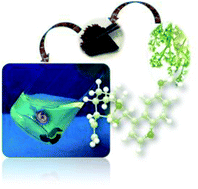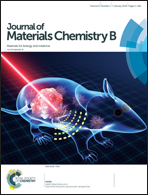Active quinine-based films able to release antimicrobial compounds via melt quaternization at low temperature†
Abstract
The fabrication of antibacterial films based on renewable materials (e.g., chitosan) has attracted significant interest in fields such as food packaging, health care and medicine. However, exploiting the antibacterial properties of cinchona alkaloids to design active nanostructured films able to release quinine-based antimicrobial compounds has not been considered previously. Herein, we develop two different routes to produce active quinine-based nanostructured cross-linked films by exploiting the multiple reactive sites of quinine and, specifically, both the nitrogen atom and the vinyl group of the quinuclidine portion of the molecule, as well as their corresponding orthogonal quaternization and thiol–ene coupling reactions. The first synthetic strategy produces stiff and brittle nanostructured quinine-based films of limited utility for practical applications. Conversely, the second approach produces active, flexible and nanostructured quinine-based films (Tg = −14 °C, Young's modulus = 1.3 GPa), which are able to release antimicrobial compounds against E. coli that, remarkably, are noncytotoxic against mouse macrophage and human dermal fibroblast cells. These kinds of active cinchona alkaloid-based coatings are easy to prepare by means of simple, solvent-free, melt quaternization/spreading procedures at a relatively low temperature (120 °C), making this second approach one of the most facile reported procedures to date to produce active nanostructured bio-based films.



 Please wait while we load your content...
Please wait while we load your content...